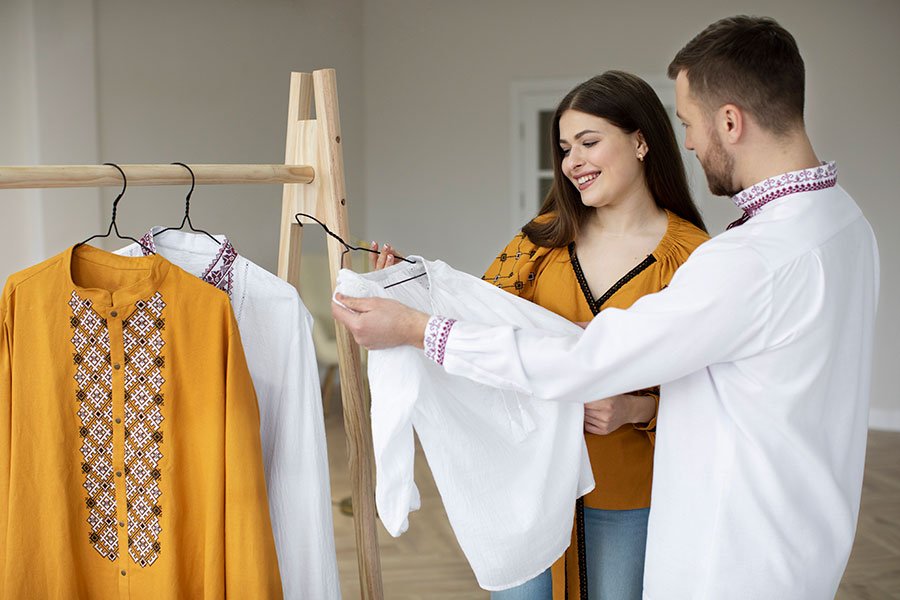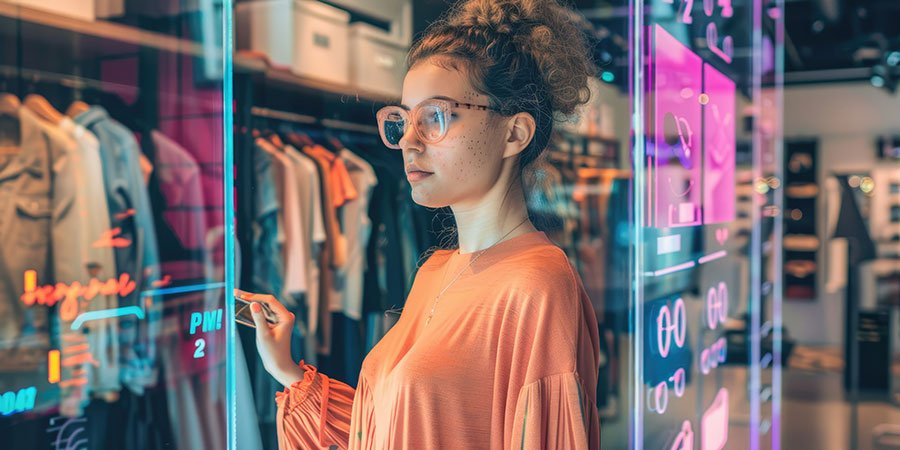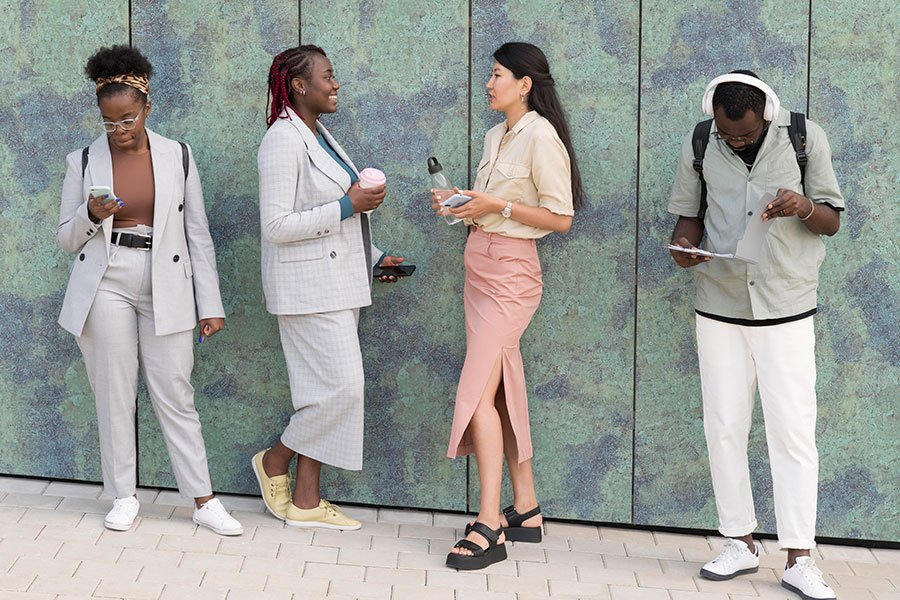The fashion industry, long celebrated for its creativity and adaptability, is entering a transformative period marked by significant geopolitical, environmental, and social shifts. The ongoing conflicts in Europe and Asia, global protest movements, and climate crises are exerting a profound influence on the way fashion is conceived, produced, and consumed. As we look ahead to the upcoming season, these forces are likely to shape key trends that will define the fashion business of tomorrow.
1. Sustainable and Ethical Fashion
The climate crisis is undeniably one of the most pressing issues of our time. As awareness grows, consumers are increasingly demanding that brands adopt sustainable practices. This trend is driving the industry towards a more eco-friendly approach, with a focus on ethical sourcing, sustainable materials, and transparent supply chains.
- Eco-Friendly Materials
Expect to see a surge in the use of organic and recycled materials. Fabrics such as organic cotton, bamboo, hemp, and recycled polyester will dominate collections. Innovations in fabric technology, like biodegradable textiles and lab-grown leather, will also gain prominence.
- Circular Fashion
The concept of circular fashion, which emphasizes the reuse and recycling of garments, is set to become mainstream. Brands will introduce take-back schemes, where customers can return old clothes for recycling or repurposing. This not only reduces waste but also fosters a sense of responsibility among consumers.
- Ethical Production
Consumers are increasingly scrutinizing the ethical implications of their purchases. Brands will respond by ensuring fair labor practices and improving working conditions in their supply chains. Transparency will be key, with companies providing detailed information about the origins of their products and the people who make them.
2. Tech-Driven Fashion
The integration of technology into fashion is accelerating, leading to innovative and interactive experiences for consumers. The upcoming season will witness significant advancements in smart textiles, virtual fashion, and augmented reality (AR).
- Smart Textiles
Smart textiles, which incorporate digital components such as sensors and conductive yarns, are set to revolutionize the industry. These fabrics can monitor health metrics, adjust to environmental conditions, and even change color or pattern on command. Expect to see garments that blend fashion with functionality, appealing to tech-savvy consumers.
- Virtual Fashion
Virtual fashion, driven by the rise of digital platforms and the metaverse, will continue to gain traction. Brands will create digital-only collections that can be worn in virtual environments, catering to the growing demand for unique online identities. This trend not only reduces the environmental impact of physical production but also opens up new avenues for creativity.
- Augmented Reality (AR) Shopping
AR technology will transform the shopping experience, allowing consumers to try on clothes virtually before making a purchase. This not only enhances convenience but also reduces the rate of returns, addressing a significant issue for e-commerce retailers. Look for more brands to invest in AR tools and apps that bring the fitting room to the consumer’s home.
3. Political and Social Influence
The current geopolitical landscape and social movements are significantly influencing fashion trends. Designers and brands are using their platforms to make political statements and support social causes.
- Protest Fashion
Fashion has always been a form of self-expression, and in times of political unrest, it becomes a powerful tool for protest. Expect to see collections that incorporate slogans, symbols, and designs inspired by social justice movements. This trend reflects a growing desire among consumers to wear their values and support causes they believe in.
- Cultural Appreciation
As conflicts and cultural exchanges continue globally, there will be a renewed emphasis on cultural appreciation rather than appropriation. Designers will collaborate with artisans from diverse backgrounds, ensuring that cultural elements are respectfully and authentically represented. This approach not only enriches fashion with global influences but also supports marginalized communities.
- Inclusivity and Diversity
The call for inclusivity and diversity in fashion is louder than ever. Brands will continue to expand their size ranges, offer gender-neutral collections, and feature models of various ethnicities, ages, and body types. This trend not only reflects societal changes but also makes fashion more accessible and relatable to a broader audience.
4. Adaptable and Functional Fashion
In response to the unpredictable nature of the world today, consumers are seeking versatile and functional clothing that can adapt to various situations. This practicality will be a key driver of fashion trends in the upcoming season.
- Modular Clothing
Modular clothing, which allows pieces to be easily combined and transformed, will gain popularity. Think jackets that can be converted into vests, or dresses that can be adjusted in length. This trend offers consumers flexibility and value, allowing them to create multiple looks from a single garment.
- Multi-Seasonal Apparel
As climate patterns become more erratic, there is a growing demand for clothing that can be worn across different seasons. Brands will design versatile pieces that can be layered or adjusted for different weather conditions, reducing the need for separate seasonal wardrobes.
- Comfort and Utility
With the ongoing shifts towards remote work and more casual lifestyles, comfort remains paramount. Expect to see an emphasis on soft, breathable fabrics and designs that prioritize ease of movement. Utility features, such as multiple pockets and adjustable elements, will also be in high demand.
5. Resilience and Innovation in the Face of Crisis
The fashion industry has always been resilient, finding ways to innovate and thrive even in challenging times. The current global crises are pushing brands to rethink their strategies and adopt new business models.
- Local Production
Supply chain disruptions caused by conflicts and pandemics have highlighted the risks of global dependencies. There will be a shift towards local production, with brands investing in domestic manufacturing capabilities. This not only ensures more reliable supply chains but also supports local economies and reduces carbon footprints.
- Direct-to-Consumer (DTC) Models
The rise of e-commerce has accelerated the adoption of direct-to-consumer models. By bypassing traditional retail channels, brands can build closer relationships with their customers and offer more competitive prices. This model also allows for greater agility in responding to market trends and consumer feedback.
- Adaptive Marketing Strategies
In a rapidly changing world, traditional marketing strategies are often insufficient. Brands will adopt more adaptive and responsive approaches, leveraging data analytics and social media to engage with consumers in real time. Influencer marketing will continue to evolve, with a focus on authentic and meaningful collaborations.
Conclusion
As we navigate an era marked by significant upheaval, the fashion industry is poised to undergo profound changes. The convergence of sustainability, technology, political awareness, and adaptability will define the trends of the upcoming season. Brands that embrace these shifts, prioritize ethical practices, and innovate in response to global challenges will not only thrive but also set the standard for the future of fashion. The industry’s ability to reflect and respond to the world’s complexities ensures that fashion remains a powerful and dynamic force, capable of shaping and being shaped by the times.










